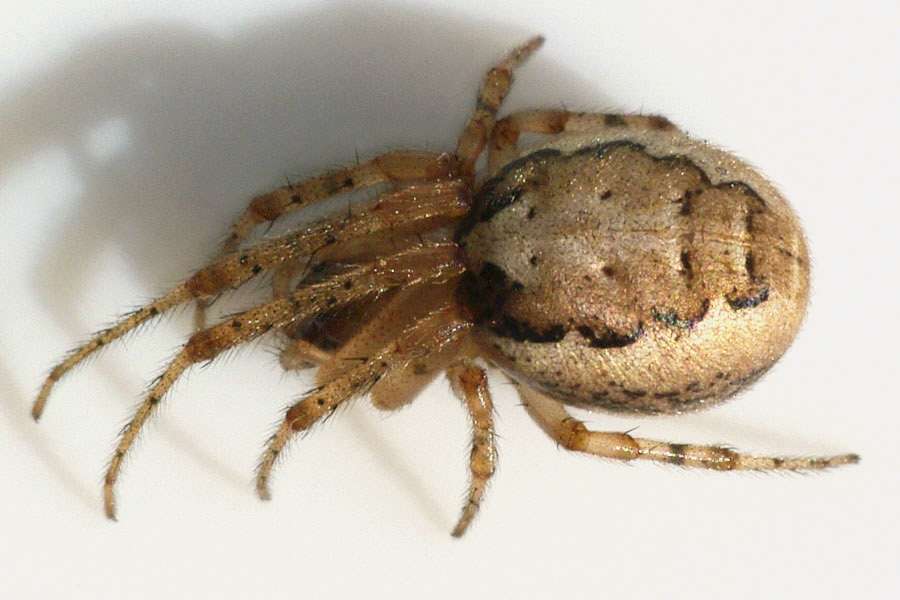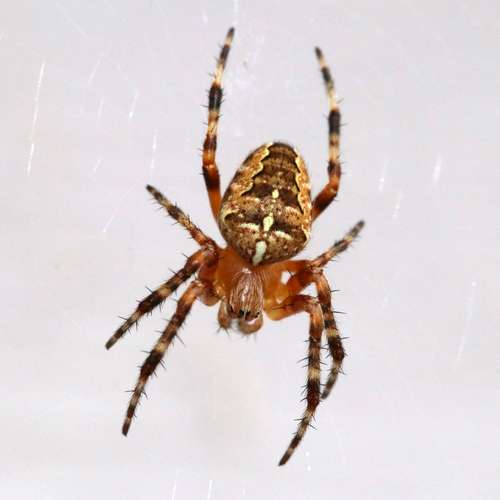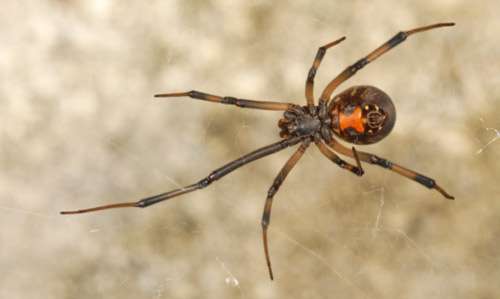
The Araneidae spider family includes the species Zygiella x-notata, also referred to as the silver-sided sector spider or the missing sector orb weaver. They are lone spiders that live in regularly spun orb webs. The orb-weaving spider genus Zygiella includes Z. x-notata.
Because of the distinctive missing sector in their webs, these spiders have earned the moniker “missing sector orb weaver.” This species is widespread throughout the planet, however it is most common in northern European regions where people live.
Description
- Mature male Zygiella x-notata have bodies that are up to 7mm long, whilst adult females have bodies that are between 5 and 11mm long. The carapace width in adult females is 1.5 mm.
- Trichobothria are found in the walking legs and pedipalps dorsal tibia. The leg metatarsus has a single sensillum. The opisthosoma bears a leaf-like mark, and the prosoma is yellow-brown in color. Guanine crystals under the skin give the abdomen a silvery sheen. Adult females can be identified by their dorsal side pattern of dark gray waves and their gray banded legs.
- Adult males are smaller than adult females and have dark-colored cephalothorax, legs, and dorsal exteriors. The male abdomen is less pronounced, smaller, and has a glossier cream color that contrasts to female.
- Adults can be seen in temperate climates from July to October, and occasionally even into December. This species is active all year round in warmer climates.
Habitat
Zygiella x-notata can be found on docks and boats as well as other places where people live. They can also be found on bushes or other types of urban plants. Females preferentially build orb-webs close to populated areas, where they spend the majority of their adult life.

Geographical Location
This species of spider is invasive in some Americas coastal areas and endemic to parts of Europe. They can be found in a few other places in the world as well. In the west Palearctic and throughout the Holarctic, Zygiella x-notata is widely spread. Z. x-notata is primarily found throughout much of Western and Central Europe, as well as Great Britain.
Feeding
Zygiella x-notata juveniles often create a fresh web every day until they reach adulthood. Orb-webs are spun by adult Zygiella x-notata and are employed to ensnare and immobilize prey. Females of this spider construct an initial web and renew it almost daily as necessary, as opposed to youngsters who construct a new web every day. The female spider will recline on the web in the recognizable missing orb-web sector, which is connected to a signal strand. The female can thus identify the presence of prey by vibrations in the signal strand when it is caught in the web. Depending on the spider’s original environment and geographic location, the type of prey varies, but typically comprises flying creatures like Diptera.
Web Format
Zygiella x-notata spiders in regions that are often used by people to construct orb webs. The orb web has radii that converge to a central hub, giving it a spiral-like appearance. A nonstick spiral is created early in the web’s development, and it is eventually replaced by a sticky spiral. The top half of the web frequently has a “missing sector” that is spanned by a signal thread that runs from the web’s hub to the spider’s retreat, which is typical of the species. The signal thread might be anything between 4 and 50 centimeters long.
Life Cycle
The life cycle of this spider is yearly. Fall is the season for female spiders to lay their eggs, primarily in September and October. Males pass away shortly after mating, while the females that survive guard the egg sacs all winter long against parasitic Hymenopteran insects. In the spring, egg sacs open, and spiderlings emerge. In August, when spiderlings reach their adult stage, mating resumes and the cycle is restarted. Female Zygiella x-notata live for about 5-7 months after reaching adulthood.
Table





